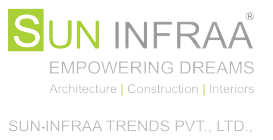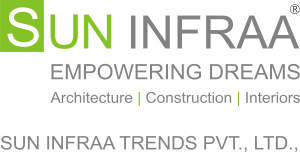How Can Neuroarchitecture Help You Live a Better Life?
The discipline of Neuroarchitecture aims to create spaces that optimize health by studying the impact of the built environment has on both emotional and physical well-being. It does this through architecture, which includes designing buildings with an understanding of how they affect people’s emotions as well as their ability at work or home life mentally.
Neuroarchitecture is a new concept that has been gaining traction in architectural design, and this blog will discuss its features.
Attributes of Neuroarchitecture
♢ The discipline of Neuroarchitecture seeks to understand the relationship between neuroscience and modern architecture. It’s based on what we know about artificial elements such as furniture, paint colors, or walls that are added into space by humans – they can have significant impacts not just for how those things function, but also on human behavior patterns within an environment.
♢ The Academy of Neuroscience for Architecture uses scientific technologies to study how people respond inside a building space. Virtual simulation is one such tool that allows users the opportunity beforehand, and experience what they might expect when walking through it as if it were already built!
♢ The behavioral effects of architecture on users can be studied through various parameters.
1. Lighting
The right type of light can help you relax, while bad lighting will make it hard for your brain to work efficiently. Unfortunately, this also applies in residential settings where occupants are affected by the normal bedroom color their moods, or physical activity levels depending on how well-lit the space is around them. The lighting effect can have an overall impact on a room feel.
2. Temperature
The brain has a very sensitive thermostat and will naturally adjust to make sure that it is comfortable. A well-balanced temperature helps create an environment where you can think clearly, which in turn improves your cognitive ability as well as your emotional state of mind!
3. Colors
It has been scientifically proven that pink colors calm nerves and reduce anger, while warm hues help improve productivity. Colors such as navy blue, bright white are considered to have a positive impact on the people. So next time when painting your walls we recommend incorporating these colors.
4. Plants
The presence of green surroundings and natural materials in a biophilic or ecological design positively affects human behavior.
5. Odor
If you want to create an environment that’s welcoming and serene, then it needs a certain scent. The right aroma can make all the difference in your architectural design, particularly in the master bedroom!
6. Curves
The soft and gentle curves of a round object such kids swing chair will relax your brain.
♢ Neuroarchitecture can be a process that follows an individualized set of steps. This is dependent on the type and requirement for construction, as well as context-specific factors such as color schemes or soundscapes desired in different areas within your home/office space
♢ The brain’s functioning towards various patterns is dependent on genetics, culture, and the individual. Hence an environment can have distinct effects on each person which means it’s important to understand what potential occupants will be using your space so you know how best to apply neuroarchitecture!
Instance of Neuroarchitecture
Jonas Salk, was an American doctor who created the polio vaccine in 1955 and became famous for it. He experienced a strong feeling of creativity when he visited St Basilica in Assisi Italy- one that inspired him to continue working on improving health care globally even after creating this life-saving procedure!
The architect Louis Kahn was called to plan and construct a project that is both artful and scientifically rigorous- where every building shows functionality while also being aesthetically pleasing. This led him/her to create one of the most incredible buildings of the 20th century–the Salk Institute for Biological Studies which houses research centers such as molecular biology & genetics; neuroscience; plant Biology.
The neuroarchitecture approach is a futuristic design to enhance the health and social relationships of inhabitants. It’s an essential tool in urban planning that results in building elements beneficial for human minds, mental well-being, or physical fitness.
Commonly Asked Questions
1.What does Neuroarchitecture mean?
A: The discipline of Neuroarchitecture studies design and implementation by studying how it relates to human health. It uses neuroscience as its guide, making for an efficient building experience with increased productivity in mind
2. What is the instance of Neuroarchitecture?
A: The Salk Institute for Biological Studies is a world-renowned research institution that specializes in the fields of molecular biology, genetics, and plant sciences. The building itself attracts attention as one spectacular structure built during 20th-century architecture to witness what they call “neuroarchitecture.”
3. What is the influence of architecture on human behavior?
A: The influence of architecture on behavior can be observed through research that looks at certain parameters, such as temperature and light. The brain’s functioning towards various patterns is dependent upon genetics in addition to culture or individual preferences when it comes down to how they want their space decorated – with some people preferring more natural colors while others may prefer bright ones instead!
Conclusion
In today’s competitive market where it is important to be on top of trends, Sun Infraa provides cutting-edge construction with neuroarchitecture. This can have a positive impact on human behavior and mood for better health as well as increased productivity! To learn more about how our company could assist you further contact us now and our experts can clarify your concern.


